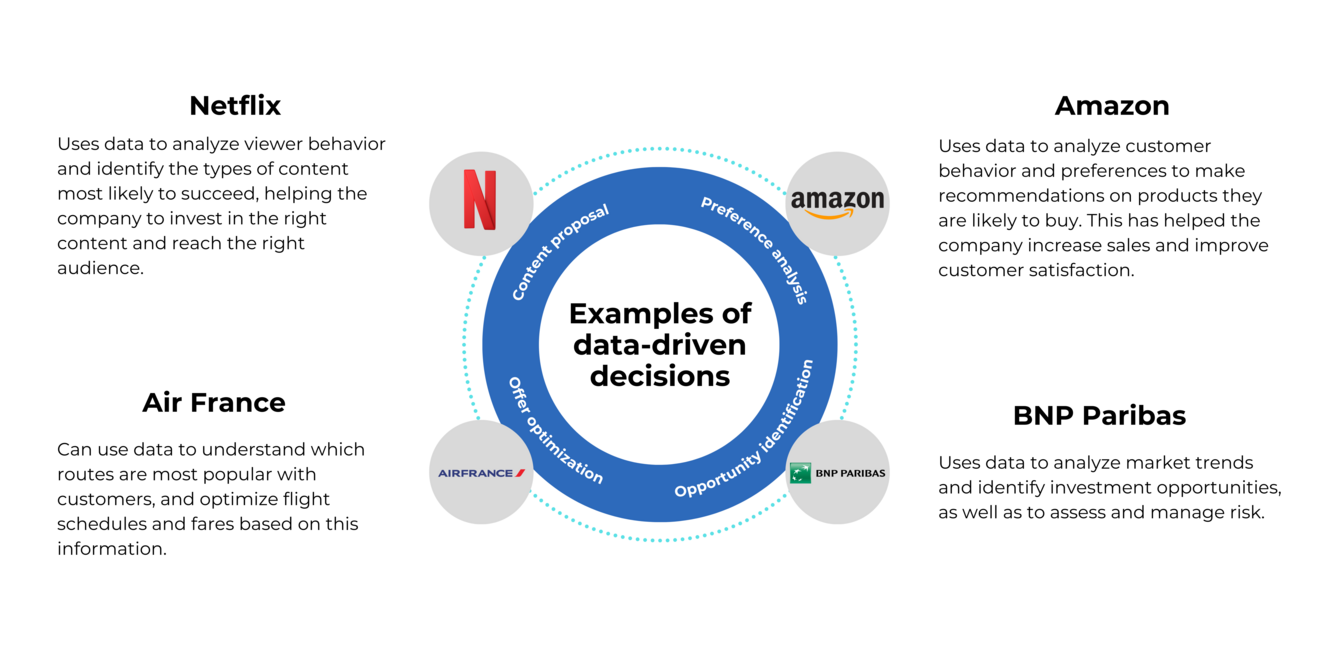THE CHIEF DATA OFFICER IS THE NEW GUEST OF THE EXECUTIVE COMMITTEE
Following the advent of information systems, data and its intelligent use have become the new strategic challenges for businesses.
The digital revolution has transformed the landscape of executive committees. If the early 2000s marked the entry of the Chief Information Officer (CIO) into the Executive Committee (ExCo), then the rise of the Internet quickly revealed the crucial need to place information technology experts at the heart of strategic decisions. With the first decade of this century constantly evolving, a new era has emerged: digitized and software-assisted enterprises. This goes beyond the mere use of information technology to support operations. It also involves a significant enhancement of the physical and software aspects of products.
The automotive industry is a prime example. It was once heavily focused on the mechanical part of the product but has transformed. They now digitize 100% of their end-to-end design and massively integrate software components into vehicles and services offered to customers. Innovation no longer limits itself to the physical aspects of vehicles but crucially extends to all features and performance of associated software.
Therefore, it’s logical to welcome the Chief Digital Officer (CDO) into the ExCo. This reflects the new reality of the enterprise where digital and data take center stage. To specify the role of the CDO: despite sharing similar acronyms, the CDO "Digital" is often confined to transforming usage, while the CDO "Data" is dedicated to all strategic changes related to data, from functional to legal, through HR and digital transformation. They cover all the cross-functional transformations of the enterprise relating to data.
In this context, where the environment is also a key evolving factor, which director will occupy the next position in the ExCo? Is it the head of Corporate Social Responsibility (CSR) or the CDO (data)?
It seems more legitimate to us that the CDO (Data) quickly joins the ExCo. We have transitioned from a digital world to a world now governed by data. To use a metaphor, if information technology and networks are the nervous system of the enterprise, now led by the CIO, then data is the brain and should be steered by a dedicated director: the CDO. This evolution symbolizes not only a rational response to the demands of the digital age but also a recognition of the importance of data in strategic decision-making at the highest level of the enterprise.

The arrival of the CDO within the ExCo should address the following challenges.
The value of data continues to grow: Data directors must play a leadership role within their organizations. However, their work is not easy, as they encounter numerous obstacles to achieve their goals. When they assume their positions, CDOs may struggle to gain the attention and support of leaders throughout the organization. Yet, they are indispensable for having a comprehensive view of the strategic assets they are responsible for.
- Promoting collaboration: In many companies, data has often been treated in a scattered manner. Its management encounters complex issues of definition, coherence, sharing, and aggregation. Moreover, managing divergent priorities within different units of the enterprise easily creates conflicts.
- Creating a link between operational and technical aspects: The data director must also face a ‘role legitimacy’ challenge. If they focus too much on technical aspects, they risk being subordinate to the Information Systems Department (ISD) and thus being distant from the ExCo. On the other hand, if they focus solely on governance, their role could become redundant compared to the Chief Operating Officer (COO). Finally, a deep involvement in the functional domain could turn them into a Chief Digital Officer (CDO) and make them lose their legitimacy to contribute to the company's strategy.
- Being the authority in charge of coherence and efficiency of exchanges: The CDO must also be able to exercise managerial responsibility towards Data Owners and IT teams. This responsibility goes beyond technical data management. It involves managing the impact on human resources by redefining roles and responsibilities within the enterprise. Without an adapted managerial organization, they will be forced to resort to influence management. In the long run, this can prove difficult and inefficient. These interdisciplinary areas of expertise guarantee the best use of data to enable the enterprise to achieve its transformation objectives. The difficulty of their implementation and the trade-offs they impose demonstrate the relevance of their role within organizations that want to innovate based on their data.
With the acceleration of AI usage, data will play an increasingly central role:
In a world where every meeting is recorded, every digital moment becomes a part of the puzzle that forms the digital personality of the enterprise. Artificial intelligence, being omnipresent, will dynamically adapt to discussions and cross-company events. This new digital object can vary between a tailored individual experience and completely clear, retaining no data, depending on the granted configurations.
As this new era unfolds, it is vital to recognize that effective data management is much more than an operational necessity; it is a strategic challenge that determines how a company will be present and interact in the digital world. The Chief Data Officer emerges as the guide and brings expertise to meet the challenges ahead. Anticipating the rise of the digital enterprise requires a strategic vision and an in-depth understanding of how data can drive innovation and growth. By integrating the CDO at the highest decision-making level, companies position themselves not only to navigate successfully in this constantly evolving environment but also to create a unique and influential digital identity. It is through this anticipation and preparation that companies can truly thrive in the upcoming digital landscape.
Authors: Antoine Nguyen & Philippe Lerique
